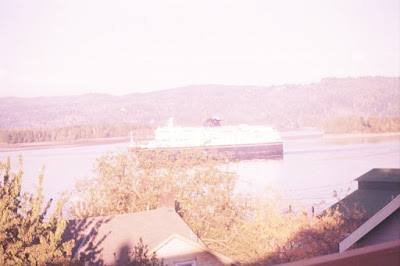The M/V Kennicott is an ocean-going ferry of the Alaska Marine Highway System that was designed by the Halter Marine Group of Pascagoula, Mississippi, and Glosten Associates of Seattle, Washington, and was built by the Halter Marine Group in Gulfport, Mississippi, in 1998, and was delivered that summer, making a monthly voyage across the Gulf of Alaska from Juneau to Kodiak. It was the first ocean-going passenger vessel in the United States in over 20 years. It is named after Kennicott Glacier in the Wrangell Mountains of the Wrangell-St. Elias National Park & Preserve near McCarthy, Alaska, and the historic ghost town of Kennecott, Alaska. The Kennicott is 382 feet long and 85 feet wide, with a draft of 18 feet. With a 12,350-horsepower diesel propulsion system, it can reach a top speed of 16.75 knots. It has nine decks, a hot-food cafeteria-style restaurant, a covered heated solarium, several observation lounges including a cocktail lounge and a movie lounge, a play area for children, a gift shop, showers, coin-operated lockers, 51 four-berth cabins and 58 two-berth cabins It also features an external vehicle elevator built into the superstructure, capable of loading and unloading at ports without roll-on ramps using ordinary docks, regardless of tide levels. Only one other ferry in the Alaska Marine Highway System fleet, the Tustumena, has such an elevator. The Kennicott can carry up to 748 passengers and up to 80 vehicles. It can also act as a mobile command and logistics center for emergency teams responding to oil spills or natural disasters.
After its first summer season, the Kennicott was sent to Cascade General, Inc. in Portland, Oregon, for warranty work. Over five weeks in September and October, it was drydocked for hull inspection and repairs to the Gyro Fin Stabilizers and both tailshafts. It is pictured here on the Columbia River at Rainier, Oregon, in October 2002 on its way back to Alaska.



No comments:
Post a Comment